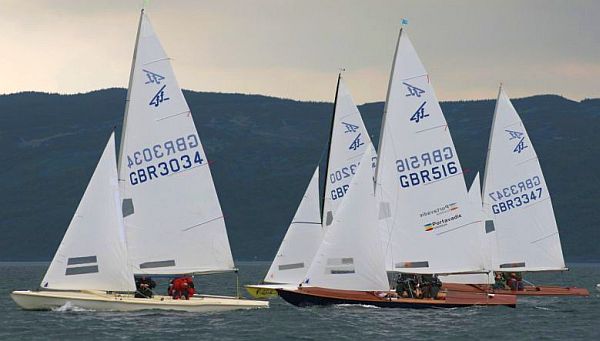Racing for the Classic and Silver Flying 15
Like many classes, the Flying Fifteen Association recognises the value in maintaining an active section for older boats both as cost-effective entry into the class as well as providing excellent racing at club level. Many well-maintained and active older boats tend to hold their value very well and can often be sold on with little if any loss. Some even appreciate.
The modern Flying Fifteen is now tightly controlled around the hull shape, providing close and consistent racing. When Uffa Fox originally conceived the boat it was available to be built by anyone, whether at home or professionally, with generous tolerances. Also, any material could be used, resulting in boats built in wood, GRP, aluminium and even Formica!

Despite the variances, boats generally raced competitively together in all conditions. In the 1970s, designer and builder Roy Windebank began looking at the rules to exploit the tolerances for extra performance in a more consistent way. Boats from his Mark 2 and 3 moulds began to be noticed as regular performers against other designs. The step change came around sail number 2700 with the introduction of the Mark 4 mould. Maximising the waterline length and width within the rules allowed the boat to plane earlier and offer more stability and sitting out power compared to earlier boats with narrower waterlines and more rocker. The performance difference of the Mark 4 is such that the definition of the Classic Fleet is for boats sail number 2700 and below, plus boats built by Wyche and Coppock and Copland/McIntosh with sail numbers higher than this, but using the old shape hull. These have been identified in the UK as sail numbers 2711, 2715, 2718, 2723, 2724, 2725, 2728, 2736, 2745, 2750, 2751, 2752, 2787, 2788, 2790, 2791, 2792, 2800, 2801, 2803, 2807, 2815, 2819, 2843, 2844, 2845, 2846, 2850, 2851, 2858, 2869, 2882, 2898, 2899, 2900, 2902, 2916, 2917, 2918, 2940, 2941, 2950, 2957, 2981, 3031, 3032, 3034, 3209.
The Silver Fleet boats run from sail number 2701 to 3200 with the exception of those eligible for Classic racing. Sail number 3200 became upper limit for the Silver fleet with the introduction of the Windebank Mark 9 hull which represented another step change in performance as an excellent all round boat, although other designs still challenge it. In the UK, the Silver fleet now includes boats up to sail number 3400 to allow for the gradual aging of boats which may not match the performance of new boats, but which still offer competitive racing on the club and open circuit.
Most open events have prizes for silver and classic boats racing in the main fleet and occasionally there are separate starts. Area and National Championships also have silver and classic prizes with the Classic fleet normally having a separate series at the Nationals.
Do not get the impression that older boats are slow, they often sail competitively against newer boats and still win open meetings outright – although this tends to be inland.